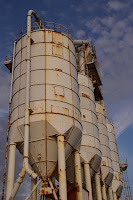Cement is produced by means of a tightly regulated chemical combination of calcium, silicon, aluminum, iron and other components. Shell and chalk or marl combined with shale, clay, slate, furnace slag, silica sand, and iron ore are the common materials used to manufacture the cement. Once heated at high temperatures, these materials form a rock-like material that is ground to the fine powder we usually think of as cement.
The cement industry is the building block of the country's building industry. Without using cement somewhere in the architecture, few construction projects will take place. With the operation of around 107 cement plants in 36 States, US cement production is widely dispersed.
Cement production places demanding requirements on gates, valves, and actuators. They must operate under harsh conditions, where the environment is dusty, dirty, and hot. Maintenance represents a significant part of operating costs, and as such, is a critical point of improvement. Unplanned shutdowns caused by equipment failure can be very costly. Slow downs influence productivity and the profit contribution per hour, and cost per hour of outages in the cement industry is very high.
This video presents a strong argument as to why the Kinetrol pneumatic vane type actuator provides the cement industry with a clearly better alternative than traditional rack and pinion or motorized solutions.
For more information, contact Kinetrol USA. Call them at 972-447-9443 or visit their web site at https://kinetrolusa.com.





